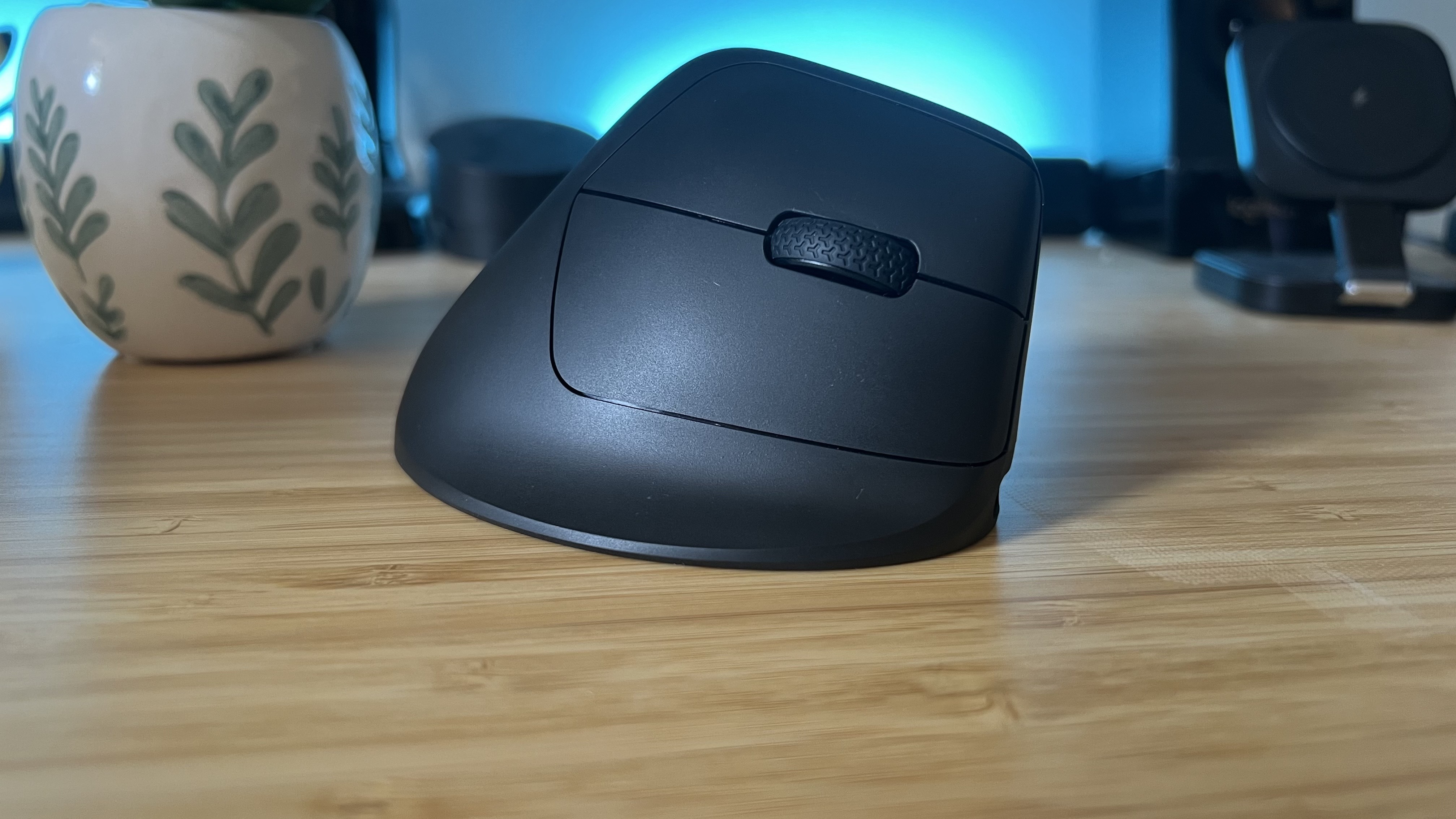
Why you can trust GamesRadar+
Our experts review games, movies and tech over countless hours, so you can choose the best for you. Find out more about our reviews policy.
I broke my hand about ten years ago, and my wrist has never been quite right since. It’s achy and stiff when held at an angle (or only moving slightly) for too much time, a problem I generally only run into when stress-testing gaming mice over longer periods of play. I was skeptical when the Keychron M5 showed up at my door, though cautiously optimistic.
We’ve all had friends waxing on about the benefits of vertical mice, and I’ve considered joining the gang a few times over the years. I never quite pulled the trigger but, after two weeks with this lop-sided fella, I can see the benefits – in some lights.
While it may have the 8K polling rate and extra control features of some of the best gaming mouse models, the M5 isn’t going to replace an FPS-first pointer for most players. In some sessions it even presented more problems than it solved. However, if you’re tired of cracking your wrist after longer gaming sessions, it could be worth a look.
Design
This is the first time I’ve used a vertical mouse, but it only took about an hour of use for the upright position to feel natural. The wider base and increased pressure on the base of my thumb? That took a little longer.
Actually holding the Keychron M5 feels comfortable enough, though perhaps not immediately so compared to the hundreds of flat mice I have in my cupboards. This isn’t a magical win for ergonomics – instead, its design places pressure on different places around the hand.
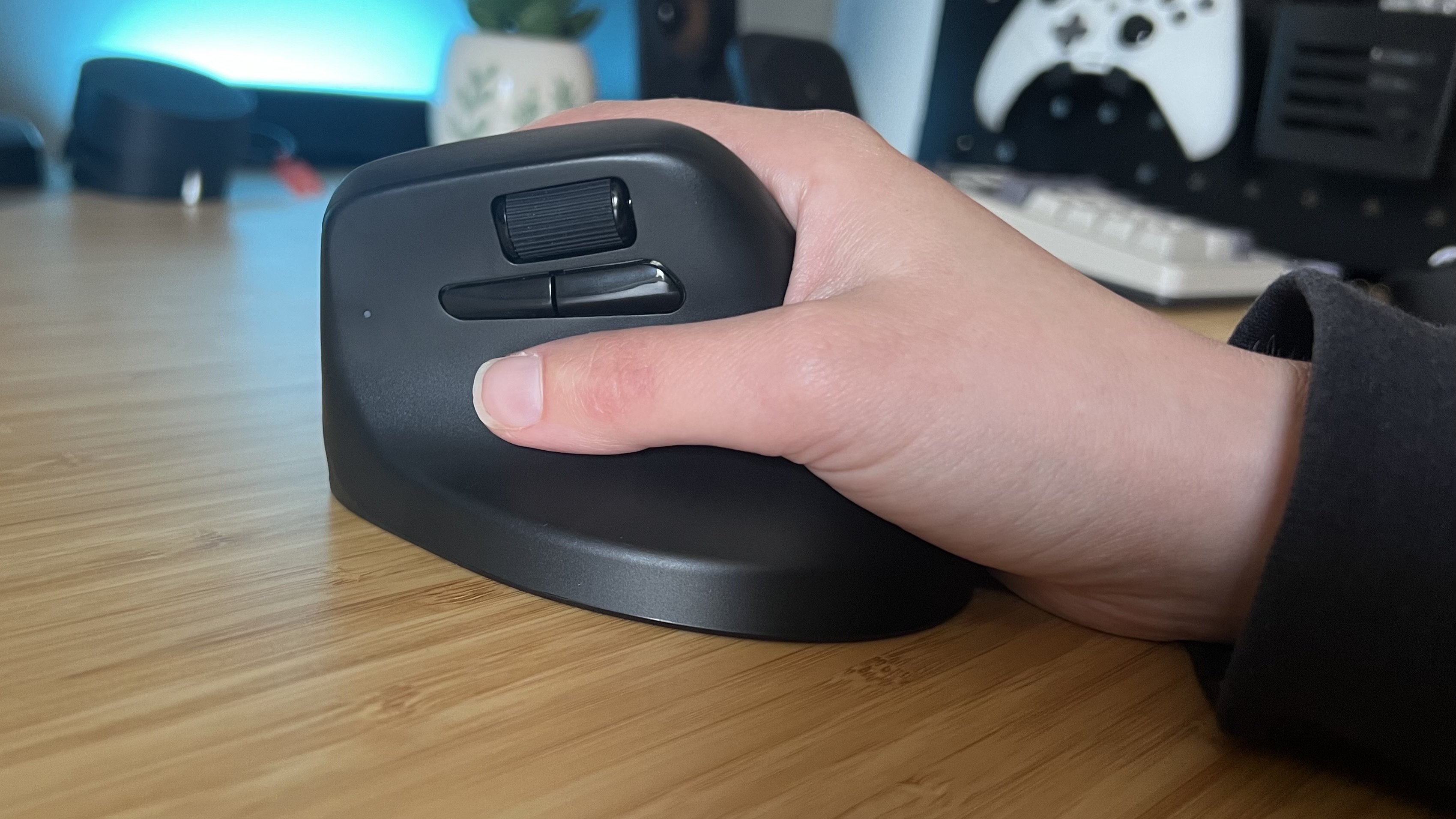
When I’m using a regular gaming mouse (I’m testing against the Logitech G Pro X Superlight 2 DEX here) I notice a strain around the sides of my wrist. After a few hours with the M5 that pressure is more noticeable around my thumb and the base of my hand. When I swap between the two I can feel different parts of my wrist relaxing and tensing – neither is more comfortable than the other overall, but each offers something different.
It’s the role that my thumb has to play that trips me up the most. While the M5 offers a generous rest on the left side, and a sturdy middle portion to grip with the rest of the palm, I’m squeezing the device a lot more than I would with a regular gaming mouse. That’s due in part to the shape, I’m no longer sharing the load between my thumb, pinky, and a couple of fingers, but also the size.
Accuracy isn’t the name of this game, maneuvering this larger, taller monster around finer aiming scenarios is a nightmare. The extra heft of a 95g chassis, reliance on thumb movements, and wider base meant I’m miss-clicking a lot more in Google Chrome, let alone Apex Legends.
The whole thing just feels too clunky to truly be wieldable in an FPS or even a faster action-adventure scenario. That much was obvious when I first started testing, but it’s also remained true as I’ve grown used to the weight and shape of the chassis itself.
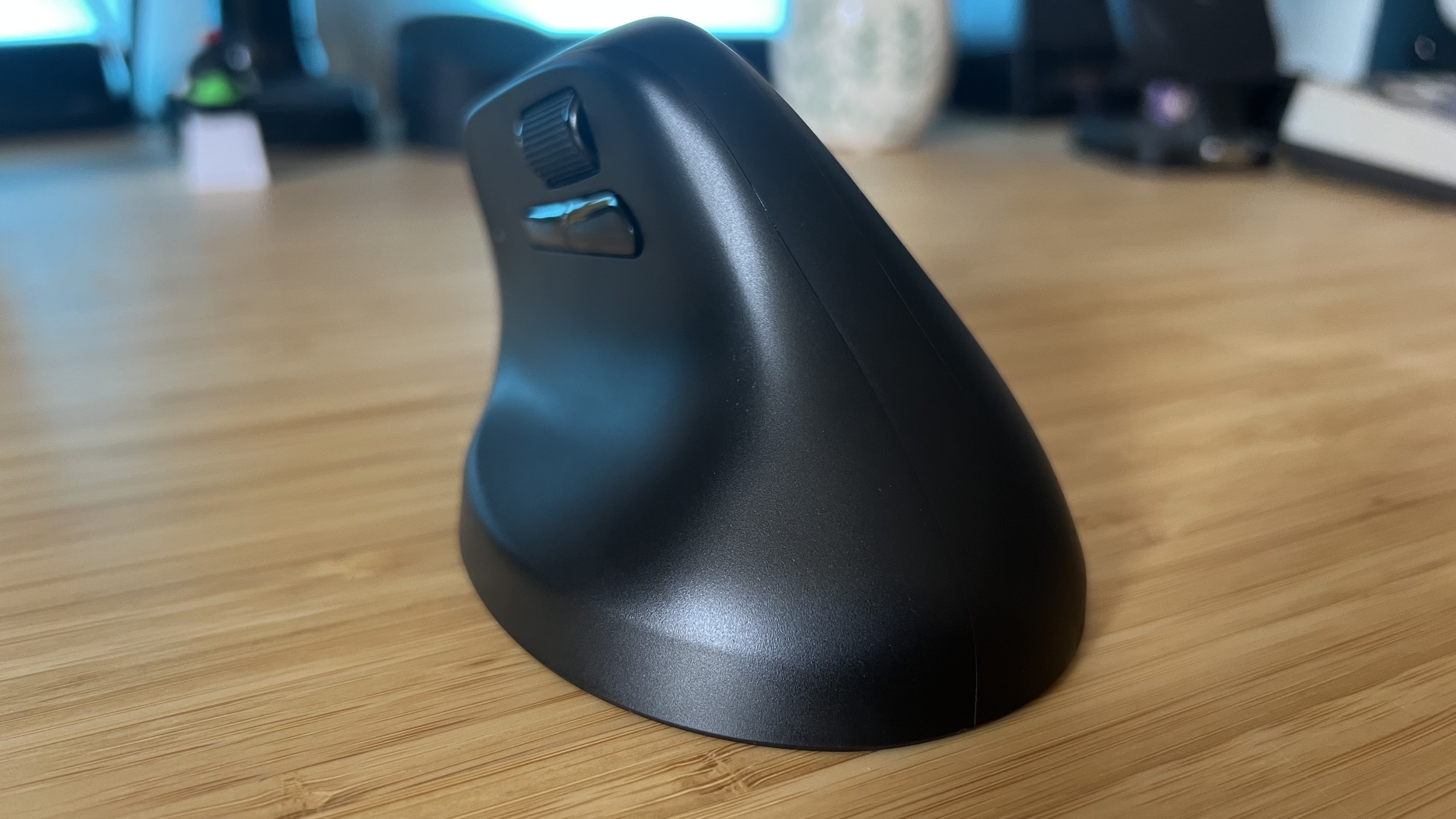
The actual chassis isn’t decked out with anything particularly special. This is a cheaper-feeling plastic build with a hollow air to it and a non-descript all-black aesthetic. Visually, it could be from a top brand like Keychron or it could be Amazon Basics, I wouldn’t know by either looking at or feeling it. That smooth material also gets a little clammy during longer sessions. Creaks are audible when the sides are pushed, though the plastic base never flexes.
Keep in mind, though, that this is a $69.99 wireless gaming mouse with an advertised 8,000Hz polling rate and 140-hour battery. I’ll forgive a basic design if the features are all there.
Controls
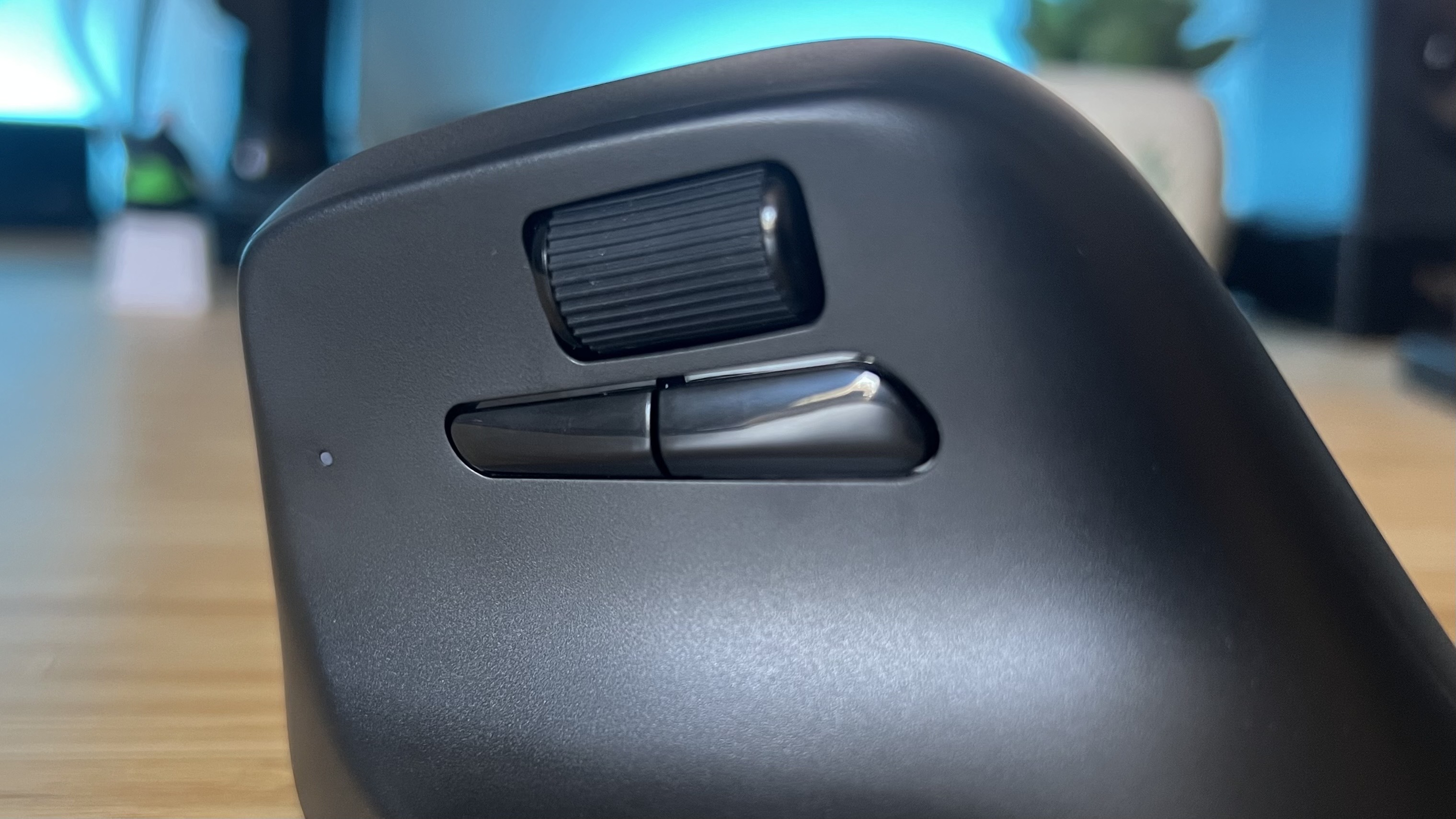
The Keychron M5 benefits from all the usual side buttons you’ll find on a regular gaming mouse, but also adds an additional scroll wheel on the left flank. The two, slightly glossy, side buttons are easily reachable, though the front clicker takes some readjusting to nail, and it only takes a small flick of the thumb to engage the notched wheel as well.
You don’t normally get two of these on a gaming mouse, so I had to get pretty creative thinking up ways to use it in-game. It functions beautifully as an additional accessory in sniper situations in particular. I can keep my main scroll locked to my weapon wheel while scope-zooming on the other. That’s really the only time I found myself using it. Though it’s going to be a dream for video editors, it could have been far more useful had it also featured a scroll click.
Software
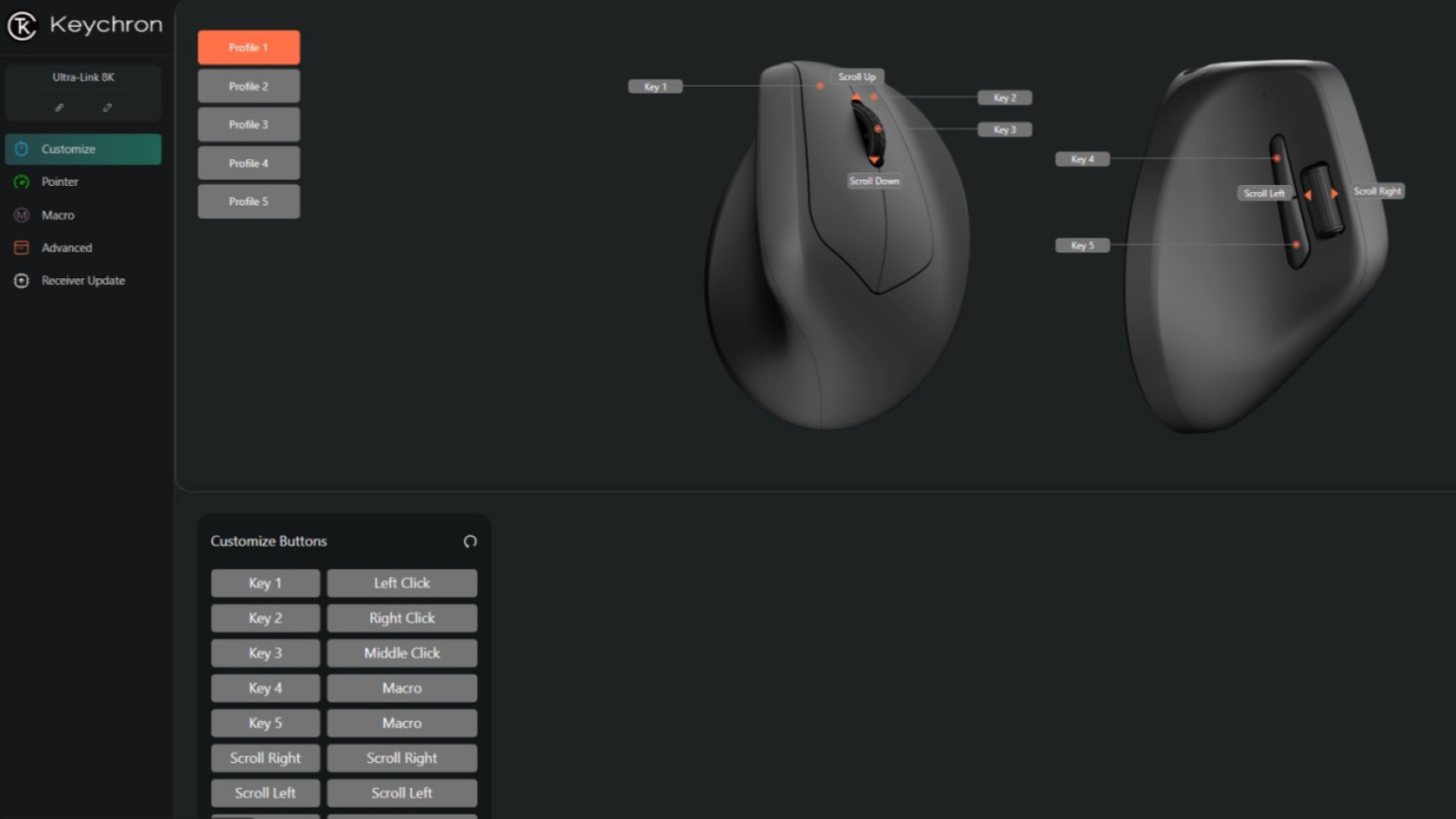
Keychron doesn’t rely on a full install for its customization options, everything is readily available via its online tool. This is a simple interface that hides its in-depth features behind a basic coat of paint. It doesn’t look like it’s ready to take on Razer Synapse or Logitech G Hub, but it’s certainly winning in what it actually offers.
Keybinding and macro recording is easy enough, each taking up their own tab and offering a simple, intuitive process for setting up. Inputs are selected from a graphic at the top of the page, though these aren’t updated once a keybinding is set, which can make it difficult to cycle through different profile settings.
DPI is adjustable in increments of 100, all along a sliding scale. There’s no option to manually input your own numbers here, but the position can be fine-tuned with +/- buttons along the side. Each profile can house five DPI settings, with each one assigned to a color that displays under the mouse itself. Interestingly, the polling rate gets the same treatment.
This is the first time I’ve seen a gaming mouse allow you to cycle through different report rates on the device itself. Each stage (125Hz through to 8,000Hz) is represented by a different combination of red, white, and blue LEDs in a separate indicator portion on the bottom of the mouse. That’s a super easy way to keep track of your settings, especially when the software boots up fresh every time.
You’ve also got access to lift-off distance settings with both 1mm and 2mm options available, as well as a shorter 0.7mm toggle (more on that later). Debounce time can also be configured across all five main keys, giving you a seriously detailed level of control over speed response.
All of those settings are saved directly onto the mouse so it’s truly a set-and-forget experience.
Connection
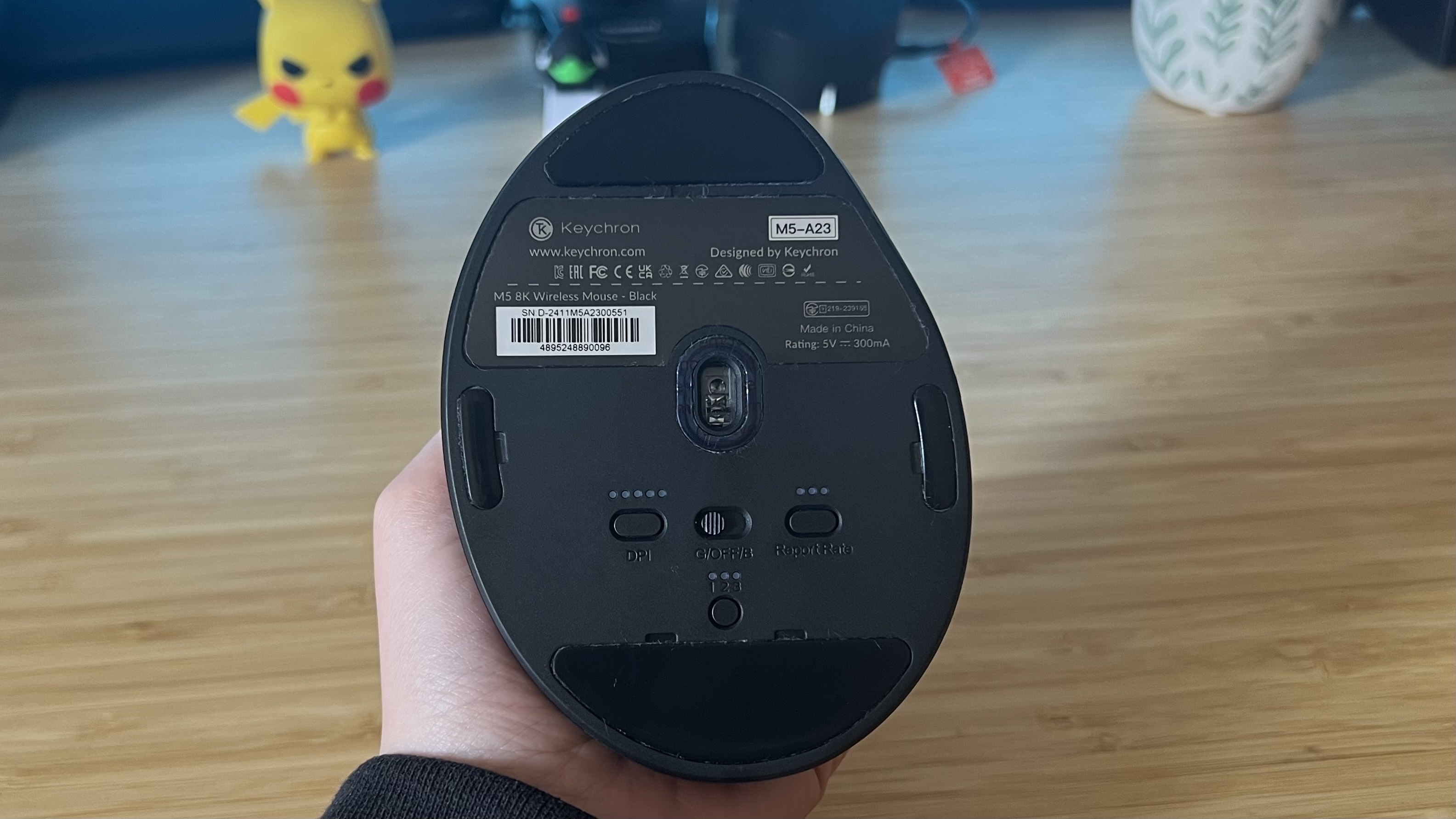
For a cheaper gaming mouse, the Keychron M5 certainly outdoes itself in its wireless connections. Not only are you getting 2.4GHz, Bluetooth, and a wired port in here (the similarly priced Cougar Revenger Pro 4K and even more expensive mice like the Razer DeathAdder V3 Hyperspeed drop Bluetooth) but there’s up to 8,000Hz polling rates available straight out the box.
With no need for an additional dongle to make the most of these speedier response times, Keychron certainly has one up over the best Razer mice in the polling department. Of course, that’s only going to be a win for the most competitive among us – very few players truly require full 8K rates. Still, it’s handy to have in your back pocket when picking up a cheaper gaming mouse.
Unfortunately, that 2.4GHz connection wasn’t the most reliable in my testing. Despite still having plenty of battery left, I noticed the Keychron M5 stalling out every so often, spending a few seconds stuck before catching up. This was persistent even with every other receiver and Bluetooth signal removed from the setup.
Battery
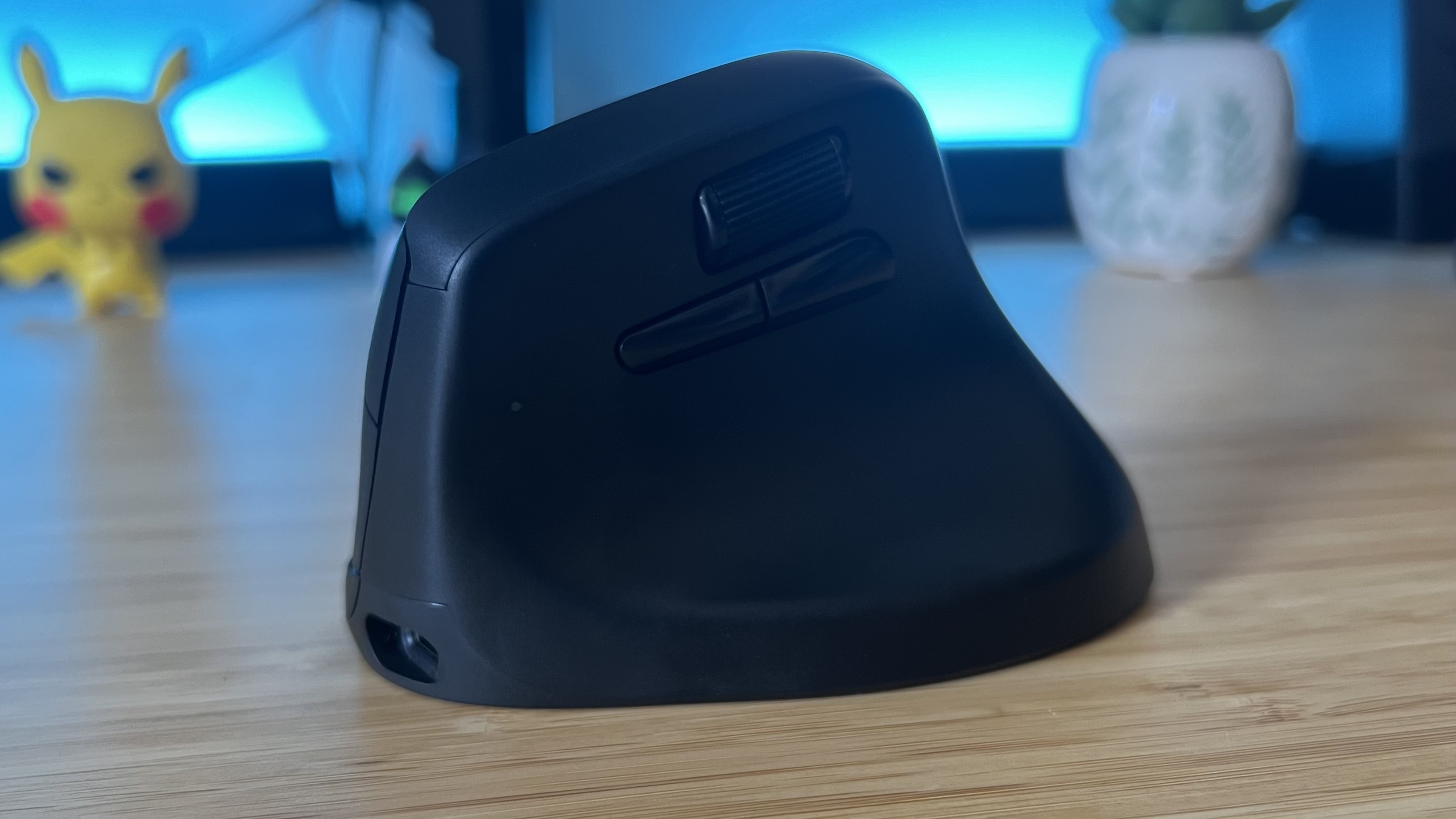
This is an insane battery life. I normally charge all my gaming mice to 100% before running their batteries fully down. It’s been two weeks of normal play and I’m still at 45%.
Keychron estimates that its rodent has 140 hours to live, and based on my usage that feels conservative. Of course, this is box fresh so mileage is going to deteriorate over time, but that’s true of every mouse I test and very few make it through the whole testing period without needing a charge.
It’s also true that this is at 1,000Hz (though there were a couple of hours of 4,000Hz and 8,000Hz gameplay in there). If you keep to higher polling rates you’re going to see a significant drop in battery life.
Sensor
A Pixart PAW 3950 sensor keeps everything rolling here. That’s a slightly boosted version of the sensor I was expecting from a $69.99 device. Most budget-conscious gaming mice use a Pixart 3395 (even more premium models like the $149.99 / £134.99 Alienware Pro Wireless gaming mouse opt for this weaker version).
The 3950 can run at up to 30,000 DPI with a 750 IPS tracking speed. That gives you slightly more room for high-sensitivity moments (though nobody is going to be reaching the top end of that DPI chart) and more headroom for reliable tracking at faster mouse speeds. The 3395 I usually see in gaming mice that don’t use their own sensors, or modify Pixart’s, runs at up to 26,000 DPI and 650 IPS.
Of course, most players aren’t going to notice the difference between these two sensors from sensitivity and tracking speed alone. There are other benefits present here that are impressive for the price.
The Pixart 3950 also benefits from that lower 0.7mm lift-off distance, which can be helpful if you’re playing with a higher DPI and need to quickly readjust more frequently. It’s also a more efficient sensor overall, which helps ensure that robust battery life as well.
The 3950 also maintains the key feature benefits of the older sensor as well, with angle snapping (for more rigid movements free of smaller jitters) and ripple control (for keeping high-DPI movements smooth).
Everything ran smoothly in the Keychron M5. The sensor kept up with faster gameplay moments well, matching high-speed movements with strong accuracy and keeping motion free from any stutter. My wilder panic-sweeps in Apex Legends felt 1:1 with the mouse’s actual position, even at high speeds.
Switches
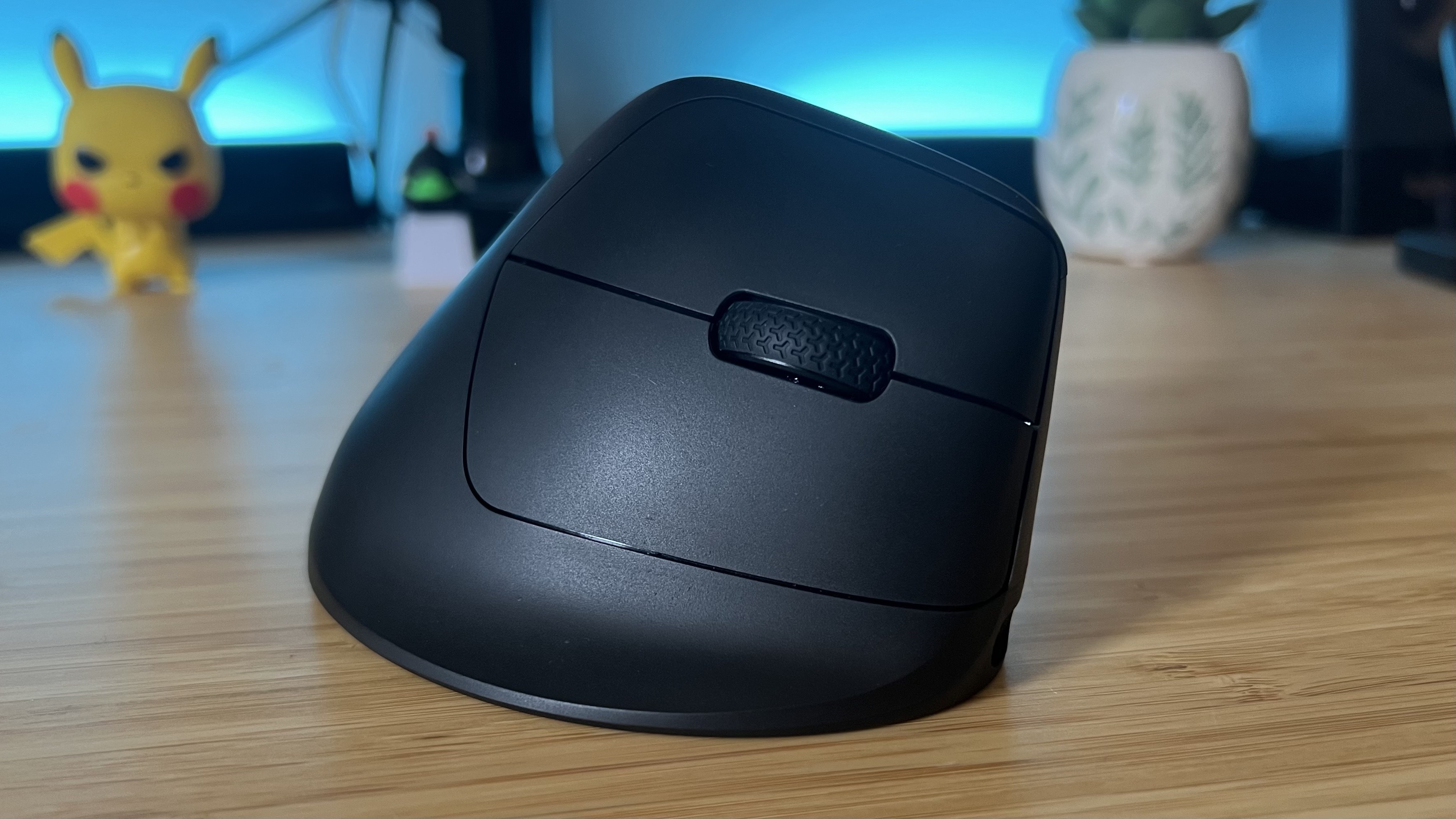
The Keychron M5 uses Huano’s switches under its clickers, with a satisfying snap and a noticeably heavier feel compared to more esports-focused models like Logitech’s Lightforce switches or Razer’s Gen 3 Optical clackers. I like the heavier feel in this iteration, though. The angle of the main clicks means they could easily be accidentally pressed if a shorter.
I naturally prefer a shorter, crisper switch, and the M5 can run the risk of feeling a little hollow, especially around the side buttons. However, considering the size and shape, these feel like well-tuned switches overall.
Should you buy the Keychron M5?
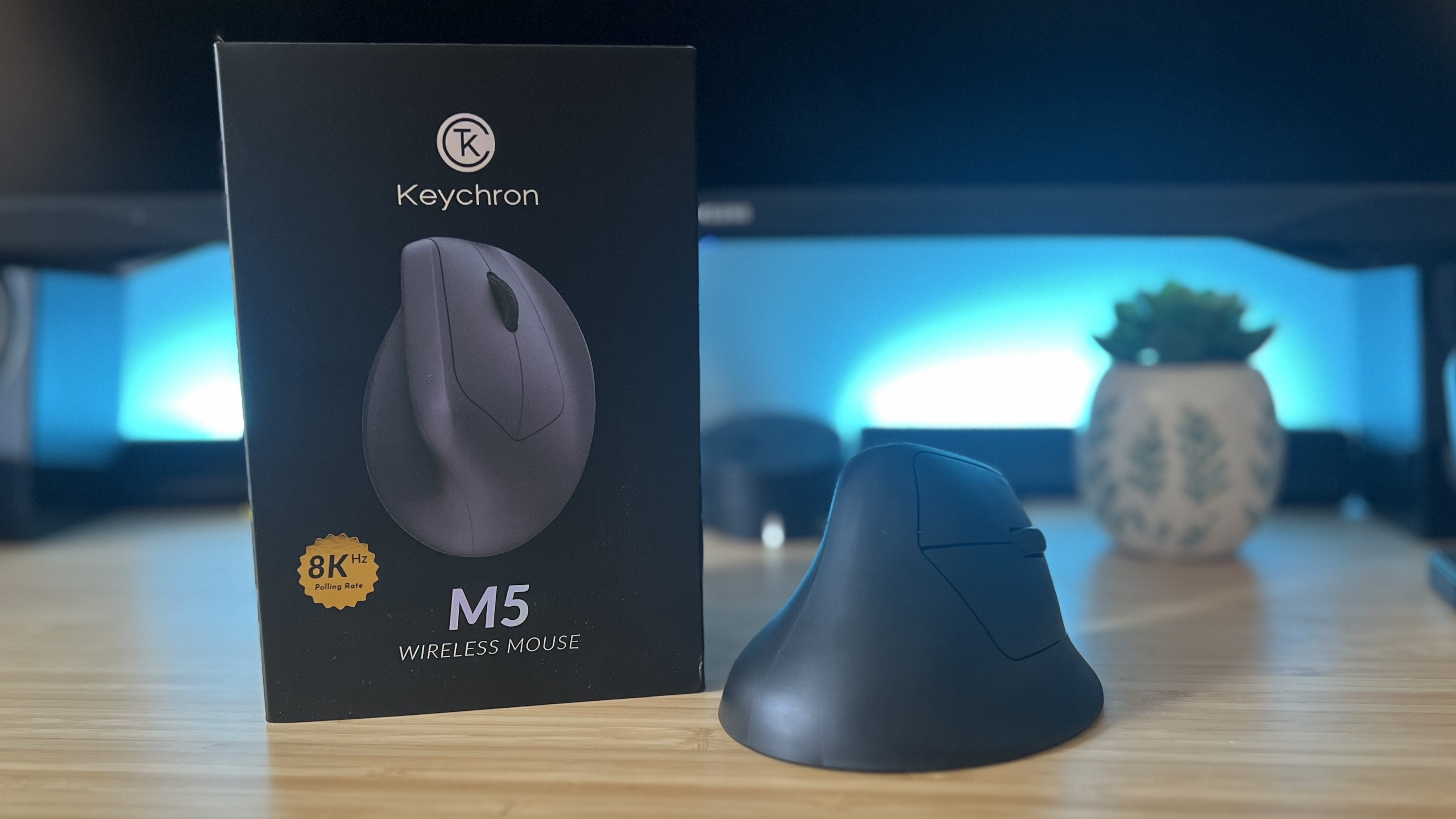
The Keychron M5 is a very capable gaming mouse if you don’t like the strain of a regular-shaped device and don’t play particularly competitively. While it’s too heavy to truly be considered a competitive device, and its larger form is too cumbersome to twitch into finer movements, it’s comfortable and speedy enough for longer single-player sessions. I did note some 2.4GHz connection dropouts, and the shape isn’t a cure-all for wrist or hand ache. However, if you’re already used to a vertical pointer and want a new device that can take on your Steam library just as well as it can your spreadsheets, this is a fantastically priced device.
|
Comfort |
4/5 |
|
Speed |
3/5 |
|
Programmability |
5/5 |
|
Connectivity |
3/5 |
|
Battery life |
5/5 |
How I tested the Keychron M5
I used the Keychron M5 for two weeks, running the device for all my daily work and play (currently Indiana Jones and the Great Circle and South of Midnight). I also stress-tested the mouse in Apex Legends and CS2. For more information on how we test gaming mice, check out the full GamesRadar+ Hardware Policy.
I’m also rounding up all the best left-handed gaming mice on the market, as well as the best Razer mouse models and best Logitech gaming mouse models available as well.


